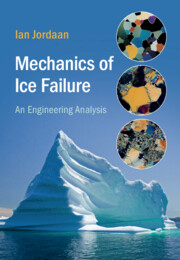Refine search
Actions for selected content:
8126 results in Fluid dynamics and solid mechanics
2 - Dimensionless Groups and Correlations
-
- Book:
- Fundamentals of Transport Processes with Applications
- Published online:
- 28 February 2025
- Print publication:
- 16 February 2023, pp 45-104
-
- Chapter
- Export citation
Bibliography
-
- Book:
- Fundamentals of Transport Processes with Applications
- Published online:
- 28 February 2025
- Print publication:
- 16 February 2023, pp 491-492
-
- Chapter
- Export citation
Contents
-
- Book:
- Fundamentals of Transport Processes with Applications
- Published online:
- 28 February 2025
- Print publication:
- 16 February 2023, pp vii-x
-
- Chapter
- Export citation
Index
-
- Book:
- Fundamentals of Transport Processes with Applications
- Published online:
- 28 February 2025
- Print publication:
- 16 February 2023, pp 493-500
-
- Chapter
- Export citation
9 - Forced Convection
-
- Book:
- Fundamentals of Transport Processes with Applications
- Published online:
- 28 February 2025
- Print publication:
- 16 February 2023, pp 421-470
-
- Chapter
- Export citation
10 - Natural Convection
-
- Book:
- Fundamentals of Transport Processes with Applications
- Published online:
- 28 February 2025
- Print publication:
- 16 February 2023, pp 471-490
-
- Chapter
- Export citation
1 - Introduction and Dimensional Analysis
-
- Book:
- Fundamentals of Transport Processes with Applications
- Published online:
- 28 February 2025
- Print publication:
- 16 February 2023, pp 1-44
-
- Chapter
- Export citation
3 - Diffusion and Dispersion
-
- Book:
- Fundamentals of Transport Processes with Applications
- Published online:
- 28 February 2025
- Print publication:
- 16 February 2023, pp 105-136
-
- Chapter
- Export citation

Mechanics of Ice Failure
- An Engineering Analysis
-
- Published online:
- 10 February 2023
- Print publication:
- 02 March 2023
17 - Machine Learning for Turbulence Control
- from Part V - Applications
-
-
- Book:
- Data-Driven Fluid Mechanics
- Published online:
- 12 January 2023
- Print publication:
- 02 February 2023, pp 350-367
-
- Chapter
- Export citation
12 - Methods for System Identification
- from Part IV - Dynamical Systems
-
-
- Book:
- Data-Driven Fluid Mechanics
- Published online:
- 12 January 2023
- Print publication:
- 02 February 2023, pp 232-254
-
- Chapter
- Export citation
8 - Generalized and Multiscale Modal Analysis
- from Part III - Data-Driven Decompositions
-
-
- Book:
- Data-Driven Fluid Mechanics
- Published online:
- 12 January 2023
- Print publication:
- 02 February 2023, pp 153-181
-
- Chapter
- Export citation
13 - Modern Tools for the Stability Analysis of Fluid Flows
- from Part IV - Dynamical Systems
-
-
- Book:
- Data-Driven Fluid Mechanics
- Published online:
- 12 January 2023
- Print publication:
- 02 February 2023, pp 255-284
-
- Chapter
- Export citation
15 - Advancing Reacting Flow Simulations with Data-Driven Models
- from Part V - Applications
-
-
- Book:
- Data-Driven Fluid Mechanics
- Published online:
- 12 January 2023
- Print publication:
- 02 February 2023, pp 304-329
-
- Chapter
- Export citation
Preface
-
- Book:
- Data-Driven Fluid Mechanics
- Published online:
- 12 January 2023
- Print publication:
- 02 February 2023, pp xiii-xviii
-
- Chapter
- Export citation
A Note on the Notation
-
- Book:
- Data-Driven Fluid Mechanics
- Published online:
- 12 January 2023
- Print publication:
- 02 February 2023, pp xix-xx
-
- Chapter
- Export citation
Part VI - Perspectives
-
- Book:
- Data-Driven Fluid Mechanics
- Published online:
- 12 January 2023
- Print publication:
- 02 February 2023, pp 391-392
-
- Chapter
- Export citation
7 - The Dynamic Mode Decomposition: From Koopman Theory to Applications
- from Part III - Data-Driven Decompositions
-
-
- Book:
- Data-Driven Fluid Mechanics
- Published online:
- 12 January 2023
- Print publication:
- 02 February 2023, pp 133-152
-
- Chapter
- Export citation
1 - Analysis, Modeling, and Control of the Cylinder Wake
- from Part I - Motivation
-
-
- Book:
- Data-Driven Fluid Mechanics
- Published online:
- 12 January 2023
- Print publication:
- 02 February 2023, pp 3-19
-
- Chapter
-
- You have access
- Export citation
16 - Reduced-Order Modeling for Aerodynamic Applications and Multidisciplinary Design Optimization
- from Part V - Applications
-
-
- Book:
- Data-Driven Fluid Mechanics
- Published online:
- 12 January 2023
- Print publication:
- 02 February 2023, pp 330-349
-
- Chapter
- Export citation
